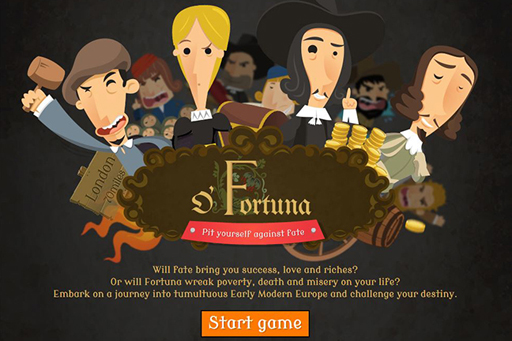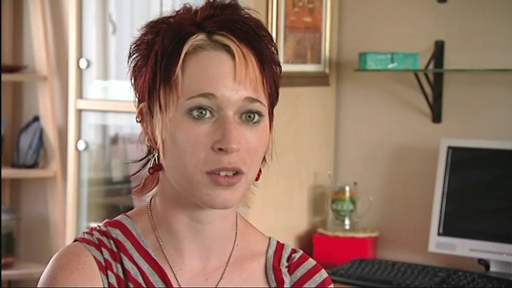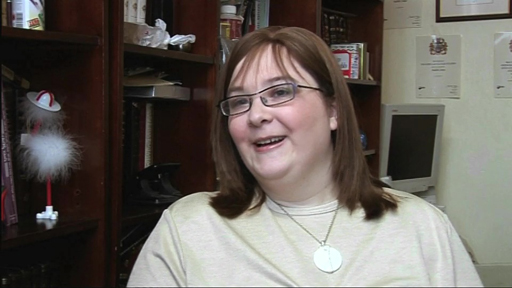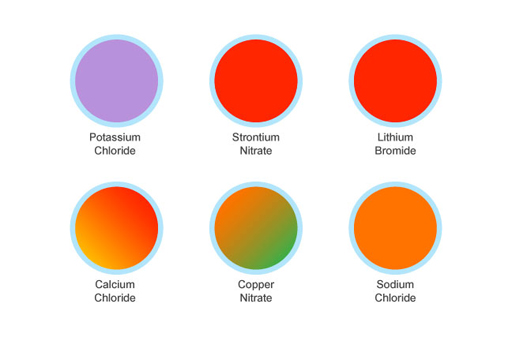Use 'Print preview' to check the number of pages and printer settings.
Print functionality varies between browsers.
Printable page generated Thursday, 22 January 2026, 2:18 AM
Week 2 Studying online
Introduction
The experience of studying online has changed drastically over the last decade. As technology has developed, so have opportunities to use that technology to make study more interesting and interactive, and more suited to the lifestyle that people lead. So you really can study any time, any place and anywhere.
What do we mean?
Open Educational Resources (OER) are teaching, learning, and research materials that are either (a) in the public domain or (b) licensed in a manner that provides everyone with free and perpetual permission to engage in the 5R activities.
First up this week, you will have the opportunity to find out about and try some of the innovations in teaching and learning that have been developed to support online study. Although not all online universities will have the same innovations, they will give you an idea of what to expect. There are three innovations which you can explore, all of which have been developed by The Open University. They are all Open Educational Resources (OER). The first is a history game based on Early Modern Europe, the second is a Chinese language application and the third is an experiment from the OpenScience Laboratory (OSL). Don’t worry, you do not need to know about anything about science, Chinese or European history to have a go at the activities.
Please note
The history and OSL activities are available on both desktop computers and tablet devices. The Chinese language activity is available on tablets and smartphones. You can do two or three, depending on the time you have available.
2.1 O’ Fortuna: can you survive Early Modern Europe?
There are many different ways to learn online. One of these ways may be through games or simulations. For example, the O’ Fortuna game has been developed by The Open University and is based on one of the most volatile periods of European history, from 1500 to 1700.
The game challenges you to take on the identity of a person of the time and make decisions about marriage, trade or religion, and see whether you will prosper and gain riches, or fail miserably in these turbulent times. The term ‘O Fortuna’ comes from a medieval poem written in Latin early in the thirteenth century, and is a complaint about fate and Fortuna, the personification of luck in Roman mythology.

Access the game here: ‘O’ Fortuna: Can you survive Early Modern Europe?’.
There are four characters to choose from, and a single run through of the game for each character should last 3–4 minutes. You can, of course, choose more than one character or make different decisions for the same character.
2.1.1 Chinese Characters First Steps

Chinese Characters First Steps is an app developed by The Open University to help students to learn how Chinese characters should be written.
Although some characters need only two or three strokes of the pen to write, the average character has around 12 strokes, so it’s a lot to remember. The app uses touchscreen technology to enable you to mimic the brush or pen strokes you would use in Chinese writing, and also to learn the order of the strokes.
To do this activity, you will need to download this free app. If you are unable to download the app, don’t worry. You only need to look at two of the learning innovations:
- visit the iTunes store for the iOS version – for iPhone/iPad/iPod Touch.
- visit the Google Play store for the Android version.
You will be learning how to write the numbers 1–10 in Chinese.
Instructions
- open the app
- select ‘Lesson 1’ and then ‘Writing Practice’
- read and follow the instructions on screen before selecting ‘Start Writing’
- trace the strokes required for the numbers 1–10.
2.1.2 The OpenScience Laboratory
As a science student at a campus university, you might expect to carry out experiments in a physical laboratory, but at an online university, you can study in a virtual laboratory wherever you are.
The OpenScience Laboratory (OSL) is an initiative between The Open University and the Wolfson Foundation to enable students to experience practical science in an accessible way. It has been incorporated into some of the science courses which students at The Open University study. To get a sense of what it might be like to study science online, you will now conduct a short flame test experiment by burning a number of metallic salts in a Bunsen burner flame. You do not need to have any knowledge of science to do this. To access this activity, you will need a free OU online account.
You are only expected to spend 20 minutes on the first part of this experiment, which involves identifying the colour of flames produced by burning the metallic salts from Tray 1 (Figure 3). If you have more time, you can conduct the whole experiment, which takes approximately one hour.
Instructions
- sign up for the OpenScience Laboratory
- visit the Flame test II experiment
- follow the instructions on screen – make sure you watch the short videos explaining how to carry out the experiment.
Note down the colour of the flame produced by introducing the following metallic salts from Tray 1 (Figure 3).
2.1.3 The flame test results
Here are the colours from the flame test. How close were you?
Modern chemists now have a wide range of instruments that identify an unknown chemical or mixture of chemicals. Before these were available, the flame test was important in identifying what these chemicals were. In the flame test, the flame differs depending on what chemicals are present. If an electron in a chemical is heated by a flame, its energy increases. The electron stays in this excited state before ‘relaxing’. When it does relax, it releases a photon. The energy and the colour of the photon depend on what element has been heated.
The colour differences apparent in a flame test can be seen in fireworks, which use different chemical elements, each of which gives a distinct colour. The elements used for fireworks are shown in Table 1.
| Red | Strontium or lithium salts |
| Orange | Calcium salts |
| Gold | Iron |
| Yellow | Sodium salts |
| Green | Barium salts |
| Blue | Copper salts |
| Purple | Mixture of strontium (red) and copper (blue) salts |
| White | Magnesium or aluminium |
2.1.4 What did you think?
In the following activity you will reflect on the activities you have just undertaken.
Activity 1
You should have now tried at least two innovations in online learning. Reflect on your experience of:
- the activities you carried out
- how easy you found each innovation to use
- the innovation you enjoyed most and the reason why
- what you have learned about online learning.
2.2 Who do you work with online?
You might have the impression that studying online means that you will spend all your time sitting at your computer and never have the opportunity to interact with either your tutors or other students. Of course, you will have to be proactive and learn to structure your study time, just as you would at university or school, but there are many ways in which you can feel part of the student and university community.
In the coming sections, you will explore how you can manage your own study time and work effectively with your personal tutor and other students.

2.2.1 Managing your own study
As an online learner, it is important to realise that you will be responsible for managing the majority of your own study time.
People often study online because they have other commitments, such as work and family. This means that the time you can put aside for study may be more limited than for many campus-based students, and may also be at different times, such as at weekends or late at night. Often the module or course you study will have a set timetable, with specific dates for doing activities or submitting assignments. However, with online study, there is often no set timetable each week and, unlike campus-based students, you will also need to find your own place to study.
This requires you to be an independent or self-directed learner. Being an independent online learner means:
… being able to manage your time effectively, juggle lots of demands on you, meet deadlines, cooperate with other students effectively, use a computer to promote your learning.
The video below shows some online students describing how they manage to combine study with work and childcare, and the physical and mental space that they create in order to be able to do this. As you watch the clips, look for the evidence that they are independent learners.:

Transcript
Now that you have heard about the experience of these students, think about your own circumstances and whether you are already an independent learner.
- What are your current commitments?
- How much time can you put aside each week to study, and when is this?
- Do you have a space to study?
- What characteristics of an independent learner do you already demonstrate?
- What characteristics of an independent learner do you have to acquire?
- What changes are you going to have to make to your life to be able to study?
2.2.2 Your study community

There could be thousands of students who will be studying with you online and you are likely to be able to meet other students on your course through online tutorials or through forums on your university’s virtual learning environment (VLE). Some online courses at Universities also offer opportunities to meet your fellow students in person, often at day tutorials. Skype and email are also a good way of keeping in touch with other students.
Student unions are active in Myanmar ever than before. Apart from offering support on how to find opportunities to study abroad, they also offer peer support for social activities.
Finally, social networks are an ideal place for sharing your experience with other students, either socially or specifically related to your studies. An online university, such as The Open University, has groups on social networks of as many as 10,000 students through applications such as Facebook or YouTube.
What strategies would you use to connect with other learners? Thinking about each of the modes of communication mentioned below, which would be most appropriate for socialising, giving or getting support, or engaging in learning activities with other students?
- email/Skype with individual or groups of students
- meet local students personally
- social media sites, such as Facebook or Viber
- blogging (a blog is an online diary or journal located on a website).
2.2.3 Your personal tutor
Studying online does not mean studying alone.
In most online universities, you will have a tutor for each course you take. Other online courses outside of University provision may have a facilitator rather than a tutor. These roles are very different and you might want take the course ‘How to become on online facilitator’ to understand a bit more about this role. This course you are studying now does not have any direct support from either a facilitator or tutor and is designed to be studied independently.
If you do have a tutor then they will be an expert within the subject area and also experienced at supporting students in an online environment. Your tutor will be your first point of contact for help with any study issues, and will support you through email, by phone or by online computer conferencing services, like Skype. As well as individual support, tutors also provide tutorials, online or sometimes in person, for other students in your course. Your tutor will support you by:
- guiding you in your studies and helping you to understand the content of the course
- giving tutorial support
- giving you advice on setting up a study group with other students
- providing constructive feedback on your assignments
- monitoring your progress on the course
- helping you prepare for your exam or end-of-module assessment.
Perhaps the most important part of your relationship with your tutor is through the feedback they provide on your assignments as it is through your assignments that you can really see how well you are doing. The following video shows how some students have responded to feedback from their tutor.

Transcript
You have already given some consideration to how you receive feedback. So think now about how you might develop your relationship with your tutor. Do you need someone who is always positive or can you take constructive criticism? Does it make a difference that you may not meet your tutor in person?
2.3 Becoming an online student

If you have enjoyed this course, then it might well be that online study is for you. There are now a large number of universities offering online qualifications and so your first decision is which university and course are right for you.
When considering an online university, you should consider:
- Does it offer the qualification you wish to take?
- Does it offer the level of personalised support you require?
- Will you be able to study at a time and a place to suit your lifestyle?
You might want to look at the other courses in this TIDE collection to continue your study.
End-of-course summary
Over the last two weeks, you have:
- thought about what online learning is and how you are already doing it
- considered the difference between formal and informal learning
- completed some activities that you may expect to do if you were studying at an online university
- examined how online learning can be a life-changing experience.
Complete our survey
In order for you to gain your Statement of participation, please could you complete the following end-of-course survey. Your feedback is anonymous and will help inform the project and improve learning experiences in the future end-of-course survey.
References
Acknowledgements
This course was originally written by Laura Hills and Jonathan Hughes. It has been adapted as part of the TIDE project for delivery in Myanmar.
Except for third party materials and otherwise stated in the acknowledgements section, this content is made available under a Creative Commons Attribution-NonCommercial-ShareAlike 4.0 Licence.
The material acknowledged below is Proprietary and used under licence (not subject to Creative Commons Licence). Grateful acknowledgement is made to the following sources for permission to reproduce material in this unit:
Week 1
Images
Course image: © Asian Development Bank.
Section 1.2.1: © ICT support staff session at TIDE May 2019 Residential School by Pooja Batta
Section 1.2.3: © ICT support staff session at TIDE May 2019 Residential School by Pooja Batta
Figure 3: © s_lena (via iStockPhoto.com)
Section 1.3.2: Johan, S. via Wikipedia (http://en.wikipedia.org/wiki/File:Tyne_Cot_%287%29.JPG), Creative Commons Attribution-ShareAlike 3.0 Unported license (http://creativecommons.org/licenses/by-sa/3.0/deed.en)
Video
Section 1.3.1: © The Open University
Tables
Section 1.3.1: Military and civilian losses of the states involved in the First World War: adapted from Gerhard Hirschfeld, Gerd Krumeich and Irina Renz (eds) (2012) Brill’s Encyclopedia of the First World War, volume 2, Leiden, Brill.
Section 1.3.1: Estimate by army of total number of soldiers who died during the First World War: adapted from Jay Winter (ed.) (2014) The Cambridge History of the First World War, volume 3, Cambridge, Cambridge University Press.
Week 2
Images
Section 2.2: © Rawpixel Ltd (via iStockPhoto.com)
Section 2.2.2: © Rawpixel Ltd (via iStockPhoto.com)
Section 2.3: © cosmonaut (via iStockPhoto.com)
Videos
Section 2.2.1: © The Open University
Section 2.2.3: © The Open University
Section 2.3.2: © TED
Tables
Table 1: © Some text adapted from Jones, C. (2013) ‘The flame test and fireworks’ The Collapsed Wavefunction, 4 July [Blog]. Available at http://www.thecollapsedwavefunction.com/ 2013/ 07/ the-flame-test-and-fireworks.html.
Every effort has been made to contact copyright owners. If any have been inadvertently overlooked, the publishers will be pleased to make the necessary arrangements at the first opportunity.
Don’t miss out:
1. Join over 200,000 students, currently studying with The Open University – http://www.open.ac.uk/ choose/ ou/ open-content
2. Enjoyed this? Find out more about this topic or browse all our free course materials on OpenLearn – http://www.open.edu/ openlearn/
3. Outside the UK? We have students in over a hundred countries studying online qualifications – http://www.openuniversity.edu/ – including an MBA at our triple accredited Business School.

